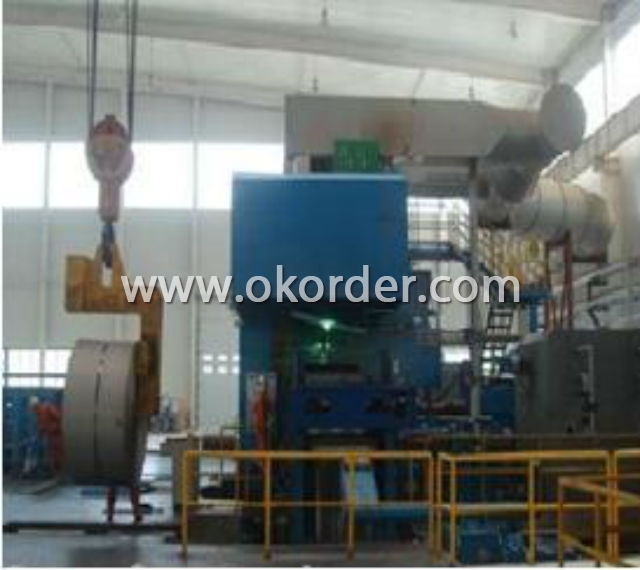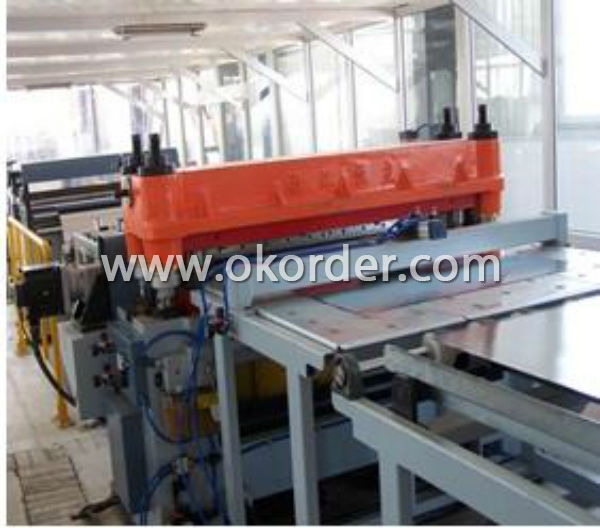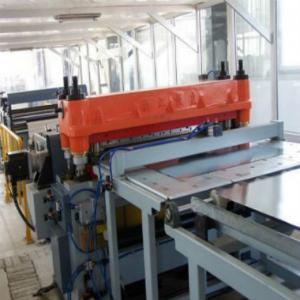Tinplate For Milk Powder Can-CFX
- Loading Port:
- China Main Port
- Payment Terms:
- TT or L/C
- Min Order Qty:
- 20 Tons ~25 Tons m.t.
- Supply Capability:
- 40000 MT Per Month m.t./month
OKorder Service Pledge
OKorder Financial Service
You Might Also Like
General information of Tinplate for Milk Power Can
|
Steel Type |
MR |
|
Temper (BA&CA) |
T1~T5, DR8 |
|
Coating |
2.8~8.4g/m2 |
|
Thickness & Tolerance |
0.15~0.5mm (Tolerance:±0.01mm) |
|
Width & Tolerance |
600~1000 mm(Tolerance: +2/-0mm) |
|
I.D |
508 MM |
|
Coil Weight |
3~10 MT |
|
Passivation |
311 |
|
Oiling |
DOS |
|
Surface Finish |
Bright ,Stone ,Silver ,Matte |
|
Min Order |
25 Tons for 1 20 feet FCL |
|
Package |
Seaworthy Export Standard Wooden Pallet |
|
Standard Available |
GB/T2520-2000, JIS G3303, ASTM A623, BS EN10202 |
|
Lead Time |
35 days after receiving buyer's original L/C or Prepayment |
|
Special specifications are available on customers' requirements. | |
Technical data of Tinplate for Milk Power Can
|
Chemical Composition(%) |
Mechanical Property |
|
C:0.02~0.04 |
Yield Strength: (Mpa):280~320 |
|
Si:0.01~0.03 |
TensileStrength: (Mpa):340~390 |
|
Mn:0.18~0.22 |
Elongation:20%~30% |
|
P:0.014~0.016 |
------------- |
|
S:0.006~0.009 |
Application of Tinplate for Milk Power Can


Tinplate is widely used for making all types of containers such as artistic cans, tea cans, painting cans,
chemical package cans and metal printing etc. Its applications are not limited to containers; recently,
tinplate has also been used for making electrical machinery parts and many other products.
Equipment and Facility of Tinplate
Tin Coating Line

Cold Rolling Mill Batch Annealing Furnaces


Cutting Line Stock Area


Quantity Control System of Tinplate

- Q: What are the different methods of joining tinplate components together?
- There are several methods of joining tinplate components together, including soldering, welding, riveting, and adhesive bonding. Each method has its own advantages and is chosen based on factors such as the required strength, aesthetics, and production efficiency of the final assembly.
- Q: How can recycled tin cans be recycled?
- Longhu white tin cans crusher is a company based on years of manufacturing experience carefully developed recovery special grinder, the crusher machine advantages in traditional variety, make full use of impact, shear, impact each other, grinding theory carefully developed.
- Q: How does tinplate contribute to sustainability efforts?
- Tinplate contributes to sustainability efforts in several ways. Firstly, it is a highly recyclable material, which means that it can be reused multiple times without losing its properties. This helps reduce the demand for new raw materials and minimizes waste generation. Additionally, tinplate is often used as packaging material for food and beverages, providing a protective and durable barrier that extends the shelf life of products, reducing food waste. Furthermore, tinplate cans are lightweight, making them more energy-efficient during transportation, thus reducing carbon emissions. Overall, tinplate's recyclability, protective properties, and energy efficiency make it a sustainable choice for various industries.
- Q: Can tinplate packaging be used for personal care products?
- Yes, tinplate packaging can be used for personal care products. Tinplate is a durable and lightweight material that provides good protection against moisture, light, and air. It is commonly used for packaging cosmetics, skincare products, and other personal care items. Additionally, tinplate packaging offers a premium and aesthetic appeal, making it suitable for various personal care product ranges.
- Q: How does tinplate perform in terms of light protection?
- Tinplate performs well in terms of light protection due to its opaque nature, which helps to block out light and prevent the entry of harmful UV rays.
- Q: How to quickly distinguish tinplate and ordinary substrate iron?
- Tinplate is the substrate, iron tin plating, tin bright, the substrate is dark, the substrate for a few days rust, and the two put together, the difference is great.
- Q: What are the latest innovations in tinplate technology?
- Some of the latest innovations in tinplate technology include the development of lightweight tinplate materials, improved corrosion resistance coatings, advanced printing techniques for high-quality packaging designs, and the use of recycled materials in tinplate production to promote sustainability. Additionally, there have been advancements in the manufacturing processes to enhance efficiency and minimize waste.
- Q: Can tinplate packaging be used for chemical products?
- Yes, tinplate packaging can be used for chemical products. Tinplate is a durable material that provides excellent protection against corrosion and can withstand the harsh conditions often associated with chemical products. Additionally, it is resistant to moisture, light, and oxygen, which helps maintain the integrity and stability of the chemical contents.
- Q: Can tinplate be used for solar panel applications?
- Yes, tinplate can be used for solar panel applications. Tinplate is a type of steel coated with a thin layer of tin, which provides corrosion resistance and durability. It can be used as a substrate material in solar panel manufacturing processes, providing a stable base for the photovoltaic cells and protecting them from environmental factors. Additionally, tinplate's low cost and ease of processing make it an attractive option for solar panel applications.
- Q: What are the different printing methods used on tinplate?
- There are several different printing methods used on tinplate, including lithography, screen printing, and digital printing. These methods allow for high-quality and detailed designs to be printed onto tinplate surfaces, making them ideal for packaging and decorative applications.
1. Manufacturer Overview
| Location | Hebei,China |
| Year Established | 2006 |
| Annual Output Value | Above US$100 Million |
| Main Markets | Singapore;Belgium |
| Company Certifications |
2. Manufacturer Certificates
| a) Certification Name | |
| Range | |
| Reference | |
| Validity Period |
3. Manufacturer Capability
| a) Trade Capacity | |
| Nearest Port | Tianjin |
| Export Percentage | 1% - 10% |
| No.of Employees in Trade Department | |
| Language Spoken: | English;Chinese |
| b) Factory Information | |
| Factory Size: | Above 240,000 square meters |
| No. of Production Lines | Above 11 |
| Contract Manufacturing | |
| Product Price Range | High;Average |
Send your message to us
Tinplate For Milk Powder Can-CFX
- Loading Port:
- China Main Port
- Payment Terms:
- TT or L/C
- Min Order Qty:
- 20 Tons ~25 Tons m.t.
- Supply Capability:
- 40000 MT Per Month m.t./month
OKorder Service Pledge
OKorder Financial Service
Similar products
Hot products
Hot Searches
Related keywords






























